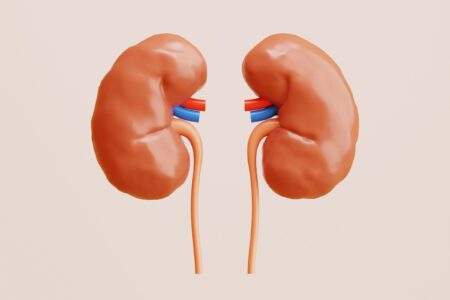Introduction
Scaling and root planing are standard procedures for treating a severe gum infection or periodontitis. Periodontal scaling involves removing plaque and tartar from the teeth above and below the gum line.
Root planing is a deeper cleaning that involves removing plaque and tartar from the roots of the teeth. Both procedures are usually done under local anesthesia and may require more than one visit to the dentist.
Usually, people take periodontal scaling and root planing as a dental cleaning process. Toggle down to explore these myths.
Myth #1: Scaling and root planing is a painful procedure.
Scaling and root planing is a routine dental procedure to clean teeth and remove tartar buildup. This procedure is often necessary to prevent gum disease and tooth decay. While scaling and root planing can be uncomfortable, it is not a painful procedure.
Scaling and root planing is performed using special instruments to remove tartar from the teeth. This process can be uncomfortable, but it should not be painful. The dentist will numb your gums before beginning the procedure if you are concerned about discomfort.
After the scaling and root planing procedure, your teeth may be sensitive for a few days. You can use over-the-counter pain medication to help manage any discomfort you may experience.
Myth #2: Scaling and root planing are for people with gum disease.
This is a deep cleaning of the teeth used to treat gum disease. The scaling and root planing process removes the tartar from the teeth and roots, which helps to prevent gum disease. It is important to note that this procedure is not just for people with gum disease but for anyone with tartar buildup on their teeth.
Myth #3: Scaling and root planing are only done once.
It’s a common misconception that scaling and root planing are one-time treatments. In reality, this deep cleaning procedure may need to be repeated several times – depending on the severity of gum disease.
This deep cleaning removes tartar, plaque, and bacteria below the gum line. It’s often done in two or three sessions, about four weeks apart.
If your gum disease is more severe, your dentist may recommend additional treatments, such as antibiotics or surgery. But with proper care at home – including regular brushing and flossing – scaling and root planing can help keep your gums healthy for years to come.
Myth #4: Scaling and root planing will make my teeth sensitive.
Many myths and misconceptions are floating around when it comes to taking care of your teeth. One of the most common myths is that scaling and root planing make your teeth sensitive.
Here’s the truth: scaling and root planing is a deep cleaning procedure that removes tartar and plaque below the gum line. This procedure is usually recommended for people who have periodontal disease.
Periodontal disease is an infection of the gums that can cause tooth loss, bone loss, and other serious health problems. Scaling and root planing can help reduce periodontal disease symptoms and prevent them from worsening.
While it’s true that scaling and root planing can sometimes cause temporary sensitivity, this is typically not a long-term problem.
Myth #5: Scaling and root planing are not covered by insurance.
Most people believe their dental insurance will not cover scaling and root planing costs. This is not true. Most insurance companies will cover the cost of this procedure as long as it is deemed medically necessary.
While some out-of-pocket costs may be associated with scaling and root planing, it is typically a very affordable procedure. For those who do not have insurance, there are many affordable payment plans available.
Myth #6: I don’t need scaling and root planing if I brush and floss regularly.
When it comes to dental care, many people believe that as long as they brush and floss regularly, they don’t need to worry about other treatments like scaling and root planing. However, this is a myth that can lead to serious dental problems down the road.
Scaling and root planing is a dental procedure for gum disease treatment. While brushing and flossing are essential for maintaining good oral health, they alone cannot remove all of the plaque and tartar from the teeth. Therefore, it’s necessary to visit the dentist regularly for professional cleanings.
Myth #7: People can’t eat after scaling and root planing.
One of the most common myths about dental scaling and root planing is that people can’t eat after the procedure. While it’s true that you may have some soreness and discomfort after the process, it’s not true that you can’t eat.
Eating a healthy diet after scaling and root planing is vital to help your mouth heal. Here are some tips for eating after dental scaling and root planing:
- Start with soft foods: soups, yogurt, mashed potatoes, etc.
- Avoid hard or crunchy foods: nuts, seeds, popcorn, etc.
- Cut your food into small pieces: this will make it easier to chew and won’t put as much pressure on your teeth.
Conclusion
It is essential to dispel the myths surrounding periodontal scaling and root planing. These procedures are vital to maintaining oral health and can be highly successful with the right care. With proper education and care, patients can enjoy healthy teeth and gums for years to come.
References:
1: Diabetes and gum disease: The diabolic duo
Publishing date: 13 October 2014
https://doi.org/10.1016/j.dsx.2014.09.022
2: The role of self-efficacy in dental patients’ brushing and flossing: Testing an extended Health Belief Model
Publishing date: 28 July 2009
https://doi.org/10.1016/j.pec.2009.06.014
3: Improving the oral health of older people: the approach of the WHO Global Oral Health Programme
Publishing date: 21 February 2005







